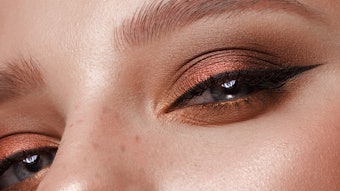
The lymphatic system is a vital component of the immune system. This body system has three main functions: to maintain fluid balance by the removal of excess fluids from body tissues; to absorb fats and transport them to blood; and to protect the body against disease. The lymphatic system consists of a complex network of lymphoid organs including lymph nodes, lymph ducts, lymphatic tissues, lymph capillaries and lymph vessels that produce and transport lymph fluid from tissues throughout the circulatory system. This system doesn’t have a pump like the circulatory system, and may slow down for a variety of reasons, such as poor lifestyle choices, injuries and autoimmune disorders that can result in swollen lymph nodes, edema, poor circulation, illness and disease.
Manual lymphatic drainage is a procedure intended to improve the circulation of lymph throughout the body in order to induce relaxation, reduce edema and improve specific conditions when directed by a physician. This massage technique was originally founded by Emil Vodder, PhD, and his wife Estrid. The Vodders were both physical therapists in Cannes, France, in the 1930s. During this time, the majority of their patients came from Northern Europe where they consistently have damp climates. As they were treating patients with chronic colds, they noticed a correlation with upper respiratory conditions and swollen lymph nodes. After researching the lymphatic system at great length, they developed a light, rhythmic massage with stretching movements to stimulate lymph flow throughout the body. In 1936, this technique started to become recognized by the medical community when the Vodders presented their findings to the public at a health and beauty congress in Paris. Since then, many physicians, lymphologists and other researchers have come up with their own techniques for stimulating the lymphatic system, most of which involve many of the same basic principles used in the Vodder method.
The technique
Manual lymphatic drainage massage is not a typical massage of the skin and muscles; it is a very complex process. The pressure is extremely light—softer than the weight of a quarter; just the opposite of deep tissue massage, during which firm pressure is used. If the pressure is too hard, the lymph system will likely not be affected, because it lies directly beneath the skin. When lymphatic drainage is performed, all movements must be applied in the direction of lymphatic flow toward the right lymphatic duct and the thoracic duct—these both drain lymph into the circulatory system at the right and left subclavian veins. These veins are present at the base of the neck below the clavicles.
During most lymphatic drainage techniques, this area is worked on first to initiate the process of draining lymph back into the circulatory system. This is typically followed by movements, including smooth, circular, pumplike strokes in areas where lymph nodes commonly exist. On average, the human body has approximately 600–800 lymph nodes, and about one-third of these are found in the face and neck alone. The lymph nodes filter bacteria and foreign material out of lymph, and expose them to lymphocytes and macrophages—cells that fight off and engulf bacteria. After manipulating the lymph nodes, effleurage movements toward the thoracic and right lymphatic ducts can be performed to help encourage lymphatic flow through the lymph nodes and eventually back into the circulatory system. Following the effleurage movements, the areas where lymph nodes lie are stimulated again, finishing with pumping and draining movements back at the base of the neck where the lymphatic ducts exist.
Necessary training
Skin care professionals who wish to offer manual lymphatic drainage should complete a thorough hands-on training at a respected education center to confirm that the movements and pressure are performed correctly. Practitioners must also be educated thoroughly on all indications and contraindications to ensure client safety. Although it is simply a massage technique, it can cause serious effects on certain medical conditions, including heart disease, autoimmune disorders and cancer. Trained estheticians who plan on using this technique pre- and post-operatively must also have an in-depth understanding of surgical procedures, including stages of wound-healing and potential complications. Skin care professionals must check legalities in the state in which they will be practicing; some state boards consider manual lymphatic drainage to be a practice of medicine. In various medical practices, manual lymphatic drainage is used to alleviate the symptoms of many medical conditions ranging from migraine headaches to multiple sclerosis. A skin care professional should only perform this treatment for specific skin conditions as directed by a supervising physician. (Editor’s note: To access the complete contact information for each state board, log on to www.SkinInc.com/education/statelicensing.)
Pre- and post-op service
An esthetician can incorporate manual lymphatic drainage into a variety of facial treatments, although it is most commonly performed pre- and post-operatively in a medical office with a physician’s referral. Many physicians recommend this treatment to reduce the risk of side effects, such as bruising, swelling and the buildup of scar tissue.
What physicians and estheticians don’t always recognize is the psychological benefits that come along with offering pre- and post-operative treatments. The ultimate goal is not only to make patients look better, but also, more importantly, to make them feel better. Going through a surgical procedure can be nerve-racking. Patients tend to feel more at ease in the tranquil setting of an esthetic treatment room during a relaxing treatment, as opposed to a checkup in a clinical room. This gives the surgical patients a tendency to feel more comfortable speaking with the esthetician about any questions they may have, because it can be intimidating for some to express their concerns to the physician. Increasing contact opportunities with multiple staff members also fosters positive relationships, which helps to build trust in the physician. Repeat visits give the esthetician a chance to confirm the patient’s continued happiness with their experience. Patients value the personal time with the esthetician, as well as the continued support they receive from the physician. The medical esthetic practice should be thought of as a pleasant place where high expectations are always met.
Become an asset
There are many other areas in which manual lymphatic drainage can be used in esthetics. It is often used in place of traditional massage, which can be too stimulating for clients with sensitive skin. In cases of acne and rosacea, the two most common sensitive skin conditions, it can reduce inflammation associated with flare-ups. Manual lymphatic drainage can also be performed by estheticians as a beauty treatment that can help reduce puffiness, fine lines and wrinkles to rejuvenate the skin’s appearance.1 Overall, the ability to perform this treatment helps make the esthetician a valuable asset to a medical practice.
REFERENCE
1. I Kurz, Textbook of Vodder’s Manual Lymph Drainage, Vol. 2: Therapy. Haug Publishing, Heidelburg (1997)
Terri A. Wojak is a licensed esthetician with more than 14 years of experience. She has knowledge in all aspects of the skin care industry, including education, sales, medical aesthetics, management and ownership, and she is the director, as well as an educator, at True University in Chicago. She can be reached at 312-335-2070, or via e-mail at [email protected].










